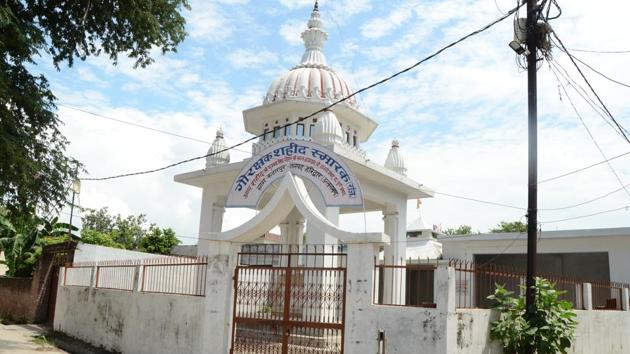Cow pilgrimage okay but ensure development, say Karatpur locals
Like other BJP-ruled states, Uttararkhand under chief minister Trivendra Singh Rawat is slowly seeing the politics surrounding the cow make inroads. Popularly known as ‘Devbhoomi’, Uttarakhand is home to the Char Dhams revered by the Hindus. In June, Rawat himself welcomed a cow and its calf to his official residence.
KARATPUR (HARIDWAR) : Sipping tea outside his house in Katarpur village, Chandresekhar Chauhan is worried about the plight of farmers. The 60-year-old is not excited by the Rashtriya Swayamsewak Sangh’s suggestion to develop the village into a pilgrimage centre since some Hindus laid down lives in 1918 protesting cow slaughter.

Chauhan says what happened in the past is all history and no one is interested in recalling the painful episode. He underlines ‘cow politics’ will serve no purpose. “We don’t want politics. We are okay with the cow pilgrimage, if it helps our boys to get a decent opportunity for livelihood. Youths are migrating to semi-urban and urban areas in search of employment,” he says.
Mohammed Hamid, a 70-year-old farmer, echoes similar sentiments. Hamid, who owns four cattle, says cow is no less than a family member for the Muslims in Katarpur. “Pilgrimage is a welcome step but the government should see who it is going to help - us or village,” he underlines. The village has some 4,000 people, including nearly 1,000 Muslims.
A ‘Gaurakshak Shaheed Smarak’ (memorial) already exists in the middle of the village. In 1918, the Britishers permitted some Muslim families to slaughter cow on the occasion of Eid. It led to communal tension among Hindus and Muslims, resulting in four deaths and more than 100 people going to jail.
Like other BJP-ruled states, Uttararkhand under chief minister Trivendra Singh Rawat is slowly seeing the politics surrounding the cow make inroads. Popularly known as ‘Devbhoomi’, Uttarakhand is home to the Char Dhams revered by the Hindus. In June, Rawat himself welcomed a cow and its calf to his official residence. The significance is not lost on the people. The Sangh’s suggestion finds favour with a BJP minister. “We endorse the idea of the Sangh for having a cow pilgrimage and the government will work into it,” animal husbandry minister Rekha Arya says.
For more than a decade after the 1918 unrest, the village saw both the Hindus and the Muslims leave for other places. A police post came up just opposite to the spot of violence, where the memorial exists. Around 1955, philanthropist Meetha Ram Bali arrived from Punjab to Haridwar and visited Katarpur when he heard about the communal violence. Ram went on to motivate villagers to return to their ancestral homes, old timers say. It was in this period when Ram gave donations to set up a cow memorial as a tribute to those who gave up their lives.
“Every year on February 8, a function is held in memory of cow martyrs at the ‘Gauraksha Shaheed Smarak’. We take pledge to protect the cow, which we regard as mother, and to ensure sacrifice of our forefathers doesn’t go waste. Cow can be found in every second household of Katarpur, though the number is getting dwindling as younger generation is not interested in cattle rearing,” village head Nootan Kumar asserts.





